以神经系统科学原理分析恐怖游戏设计要素
作者:Maral Tajerian
恐惧是人类的本能。它不仅能够帮助我们在危险境况中获得生存,同时它在娱乐产业中的运用也可以带给我们受惊吓的乐趣。电子游戏产业便通过利用人们的这种情感,并将其融入游戏故事和设计中而创造出许多优秀的恐怖游戏。
例如我们可以将玩家放置在一个资源短缺的危险环境中,并且他们需要在此面对各种敌人。设置合理的话,玩家将会心跳加速,手心冒汗,甚至连在晚上睡觉时都会做恶梦!而如果设置不够合理,玩家便只会觉得他们在“走过场”而已。
在过去的20年,一些游戏因为能够成功带给玩家恐惧与紧张感而被定义为恐怖求生游戏(游戏邦注:包括早前的《生化危机》系列,以及最近的《失忆症:黑暗后裔》)。
尽管经过多次成功的迭代,这些游戏都提供了许多不同的敌人,游戏机制和情节,但是对于玩家心理的影响却始终保持不变。本文将着重阐述游戏产业是如何使用人类的这种恐惧心理,并研究如何平衡恐惧与游戏玩法而最终创造出一款成功的游戏。
关于恐惧的科学解析
先是焦虑,然后才开始害怕。焦虑总是我们在电子游戏中最先感受到的。如果说恐惧是对于逼近的威胁的反应,那么焦虑便是对于未来潜在威胁的反应。
人类都带有感知系统,并且根据研究表明,当危险慢慢逼近时,人类便会产生一种焦虑感,并且面向这一潜在危险而提高自己的注意力和敏感度。这就意味着当玩家在游戏中解决一个谜题时他们同时也在感受着恐惧与危险。根据很多玩家的表述,当他们在一个危险的环境下解决谜题时,他们的恐惧感也会随之上升。《寂静岭》便非常擅于通过谜题去突出这种恐惧。
(这是《寂静岭2》中的一个谜题,玩家需要在一个黑暗且破旧的房间中做出解答。)
尽管第一人称射击游戏总是降低了玩家对暴力的敏感度,但是这类型游戏却能够带给玩家面对危险的焦虑。这是一种动物反应行为,并且是一种高度自适应行为,因为它将确保个人能够在一种危险的环境下保持高度警惕。也就是在电子游戏中提升焦虑感便能够帮助玩家更加敏感地面对游戏中的危险。在像《失忆症》等游戏中,整个游戏体验都让玩家笼罩在焦虑中(并且玩家也并不清楚如何保护自己),从而帮助他们更好地应对敌人的攻击。
无助。就像之前所提到的,玩家在生存恐怖游戏中总是会面临一些可怕且不可避免的环境,同时也缺少足够的自我防御措施。换句话说,他们总是会在此面临极端无助的境况。
在《失忆症》中,玩家总会记得将自己锁在壁橱中,或隐藏在角落里长时间盯着空白的墙壁,因为他们知道如果自己移动了(甚至只是一小步),便可能会面临致命的恐怖袭击。除此之外,僵硬的摄像机镜头,笨拙的控制机制(就像《寂静岭》,早前的《生化危机》系列游戏)等元素都有可能剥夺玩家仅拥有的一点控制。
无助是一种非常强大的感受。研究表明,当任何动物在面对让它们倍感无助的环境下总是会产生强烈的恐惧与焦虑。就像是我们去看牙医时的感受。当我们感到无助与失控时,我们必然也会感到焦虑与害怕。在电子游戏中亦是如此。
启动效应。在心理学中,启动效应便是我们对于任何外部刺激所做出的反应。
让我们以低频词汇测试任务为例。在这里,测试对象将面对某些单词,其中有个单词是“lettuce”。然后他便需要填满“let____”。而当测试对象因为之前在实验中看过这个单词而能够准确填出后面的“tuce”时,他便会产生这种启动效应。
很多游戏便是使用这一策略去创造游戏中的焦虑感,即通过使用音效去提醒玩家注意入侵的敌人。在《失忆症》中,当玩家进入各种酷刑室中面对着一个个可怕的受刑犯,他便会产生启动效应,即当他也被锁在这里时,他便会幻想自己将遭到相同的折磨。
除了这种启动效应,一些不可预见的事物也会让玩家受到惊吓。例如当玩家因为某些事件而安全地穿越游戏关卡时,他们便会在再次面临相同环境时放下所有防备(游戏邦注:例如《毁灭展示3》的前三十分钟或《寂静岭》和《死亡空间》系列的中心)。
这种方法不仅能够帮助我们节省关卡设计时间,同时也能够维持游戏的进程并创造出一种紧张恐怖的氛围。
镜像神经元。镜像神经元是动物大脑的某一块区域中的神经元,当动物在执行某一行动或观察别人如何执行同一行动时这一神经元便会被触动。
早在几十年前,这种神经元就被当成人们理解别人的目的,感受,情感,甚至是效仿他人行为的关键因素。所以镜像神经元在连接人类经历与虚拟角色中起着非常重要的作用。
(根据PET的研究,我们知道大脑中的相同集群总是会因为个人在观看一种行动(听音乐)或参与行动(演奏音乐)时被激发。)
在大多数电子游戏中,当玩家在三维空间中移动时便会触发出空间定向镜像神经元。在《寂静岭》游戏系列中,相同的游戏机制(如玩家需要将手伸到洞里拿出东西或需要将某样东西从马桶中取出来)将能同时引起玩家的焦虑与恶心之感。
就像在《寂静岭2》中,游戏要求James Sunderland必须将手伸到肮脏的马桶里,这便会让玩家感到恶心,并且这种感受也将映射到他的大脑中,并在某种类似情况下再次表现出来。
类似的情况也出现在《死亡空间2》中,即玩家必须选择在一个极端有限的空间中爬行(摄像机镜头让整个画面都变得有所不同)或者需要将针插进Isaac Clarke(游戏邦注:《死亡空间》的主角)的眼睛中。
最好的情况便是,这些游戏的开发者越来越意识到这一元素的重要性,并更加重视它的使用。就像Frictional Games(《失忆症:黑暗后裔》的开发商)的创始人Thomas Grip所言,当游戏拥有较强的移情元素时,添加镜像神经元便非常重要。换句话说,玩家将真正与游戏主角融为一体。
环境。环境对于人们在认知恐惧并加强吃惊反应中起着非常大的作用。在适当的环境下,我们基本的惊吓感将随着厌恶条件的作用(与玩家相对抗)而逐渐发生变化。
环境同时作用于游戏内部和外部。在游戏外部,气氛能够加强玩家的游戏体验(就像在一个黑暗的房间,带上耳机玩游戏更能让玩家有身临其境之感)。而在游戏内部创造一个合适的环境也非常重要,并且能够有效地利用人类的神经生物学原理。例如我们对于黑暗的恐惧是源于不断进化的日夜节律,即白天与黑夜的循环让我们在夜晚显得较为脆弱。同样的,夜间活动的动物如老鼠在见到光时也会常常呈现出类似的惊吓反应。
(光线的运用也能够创造出一种无助感,通过将玩家笼罩在一个神秘的环境下能够营造出恐怖的气氛。)
同时还需要指出的是,适当的环境设置也能让我们因为一些不是很危险的物体或线索而诱发出恐惧感。基于听觉线索(而非直接的厌恶刺激)的恐怖环境也能引起玩家的焦虑。
《F.E.A.R.》的反派角色Alma便是一个典型的例子——这个小女孩能够做一些非常可怕的事。此外,不可预测的厌恶刺激(如小女孩与带有电锯的男人之间的对抗)也会增强我们的认知焦虑和恐惧。
《F.E.A.R.》的游戏设计师Craig Hubbard说道:“一个带着面具且手持切肉刀的男人追赶着一名女学生听起来很可怕,但是当你从自己的角度进行思考时,你有可能会想自己至少可以伺机踹这个男人的屁股。而如果这个怪异的小女孩是美国特种部队中的一员,你又该如何处理这种情况?”
将恐怖元素融入游戏玩法中
在恐怖游戏中同时创造出恐惧感与互动性并不是件易事。当其它游戏是在挑战玩家解决谜题与对抗敌人的能力时,恐怖求生游戏则是在挑战玩家对于危险的反应。为了创造出一款优秀的恐怖游戏,你就必须仔细考虑如何基于环境以及角色在环境中的目的而带给玩家焦虑感,有效地连接游戏环境与角色间的关系,并除玩家所拥有的控制权。
而这种设计也有可能创造出一种事先设定好的恐惧感(即在《寂静岭2》中,Pyramid Head幽灵般的外观便分散于游戏的各个角落),这将让玩家察觉到游戏的线性玩法,而让他们难以在此感受到个性化的体验/选择,并认为游戏不具有重完价值。
(上图:在《死亡空间》中当玩家首次遭遇尸变体时他们并不能给予反击从而提升了焦虑感。下图:Pyramid Head透过一个不能通过的铁栏凝视着James Sunderland。)
这同时也将在玩家的游戏过程中创造出一种不可预期感。就像在《寂静岭:破碎的记忆》中便出现了一些特定的事件以暗示游戏向“冰雪世界的过度”,而推动玩家为了避开危险奋力奔跑。
但是这种事件只能创造出一次的焦虑感,之后再尝试也就不见得有效了。但是这却不意味着这种事件不再能够引起玩家的焦虑,它只是达不到之前的效果罢了。
同样地,在《死亡空间》中,玩家也可以规划他们与敌人间的对抗,即朝向附近的通风口或隔栏发动进攻。一旦他们能够这么做了,他们的游戏体验便不再只是恐惧了,还将包括对抗与获取能量。
(上图:《死亡空间》中的尸变体。下图:在《寂静岭:破碎的记忆》中出现冰雪的转变时玩家便需要奋力奔跑。)
如此看来电子游戏的发展趋势便是更加突出一些本能行动(我们可以通过对比《死亡空间2》与《死亡空间》,或《生化危机4》和《生化危机5》与之前的《生化危机》系列),这就标志着开发者可以更好地基于恐怖游戏(而不是真正的恐怖游戏)创造出一款动作游戏,并有效体现出我们上述所提到的所有动物行为原则。
结论
作为一名神经系统科学家,我很高兴看到电子游戏能够有效地利用科学原理,并且我也发现了这种趋势将持续吸引更多游戏玩家。所以,我们到底能从《失忆症》,《寂静岭》以及《F.E.A.R.》等游戏中学到什么?也就是说,我们该如何将这些基本的神经学原理应用于电子游戏中?
首先我们需要做的便是保持消息的灵通。科学研究的进展总是非常快速,而大多数研究结果却只能在(至少)10年后才真正被大众多了解——即最终发布在教科书上。而最近关于信息交流的改革却也不能完全解决这一问题,所以我们能说这种改革是一把双刃剑。它既能够帮助我们快速传播信息,但同时也仍是一种不可靠的方法。
然后便是需要大胆地尝试各种新类型。通常,新游戏的出现也会伴随着我们对于电子游戏的新认识。尽管这种方法风险重重,但是在这个充满各种游戏的产业中,遵循一个明确且统一的方法非常重要。
最后,我们必须建立起游戏(或者说是主要角色)与玩家间的情感联系。角色扮演游戏便通过模糊了玩家与角色间的界限而有效地呈现出这种情感联系。而在其它非角色扮演游戏中,这种联系便不那么明显了。
建立玩家与游戏间的纽带的最佳方法便是诱发玩家产生强烈的情感。恐怖求生游戏便是利用恐惧感而有效地做到了这一点。但是这却不是唯一方式。最近我们还看到一系列不同的游戏在利用各种不同的情感,如悲痛( Tale of Tales的《墓地》),爱与失去(Thechineseroom的《Dear Esther》)等。显然,“一体适用”的电子游戏时代已经一去不复返了。
最后,我们必须在面向玩家销售游戏前先了解他们。游戏产业中有许许多多游戏工作室,而不管他们开发的是AAA游戏还是独立游戏,肯定没有一个开发者想要冒险创造出一款不可能成功的游戏。所以了解玩家对于吸引人/刺激/上瘾的定义有助于他们创造出真正成功的电子游戏。(本文为游戏邦/gamerboom.com编译,拒绝任何不保留版权的转载,如需转载请联系:游戏邦)
Fight or Flight: The Neuroscience of Survival Horror
by Maral Tajerian
Fear is one of the most primitive instincts in humans. Although it has been particularly useful in keeping us alive in dangerous situations, it has also helped the entertainment industry capitalize on our sheer joy of being scared. The video game industry has done a good amount of scaring by taking advantage of these emotions and employing them in gameplay narrative and design.
This practice is best exemplified by putting the player in a vulnerable situation with limited resources to confront enemies. With proper execution, the genre can make your heart race, palms sweat and make you go to sleep with nightmares. However, when executed poorly, players feel as if they’re simply “going through the motions”.
Over the last two decades, several games (ranging from the early Resident Evil series to the more recent Amnesia: The Dark Descent) have defined the survival horror genre by successfully engaging fear and anxiety in players.
Although successful iterations of these games offer different enemies, gameplay mechanics and plot, they all share similar ways of handling the human psyche. This article will discuss how fear as an emotion has been employed in the gaming industry and discuss how the balance between scares and gameplay can lead to success or failure.
The Science of Terror
Anxiety. Next to fear, anxiety is perhaps the most prominent feeling experienced in video games. Unlike fear, which is a response to an imminent threat, anxiety is a response to a future potential threat.
When perceptual systems are taxed, research has shown that a looming threat results in anxiety that heightens attention and increases sensitivity to potential dangers. This implies that solving a puzzle the character is presented with in the game does not take away from the experience of fear and danger. In fact, according to many gamers, solving the puzzles under dangerous circumstances only increases the feelings of fear. Consider how riddles and puzzles in Silent Hill excel in this respect.
An example of a puzzle from Silent Hill 2 that needs to be solved in a dark and dilapidated room.
While games like first person shooters are notorious for desensitizing players to violence, games that raise the player’s anxiety actually sensitize them to danger. This is simply how animals behave, and it’s a highly adaptive behavior, since it keeps individuals on their toes in anxiety-causing environments. Raising the levels of anxiety in a video game will therefore ensure that the player is sensitized to the danger in the game. In a game like Amnesia, the entire experience teeters on anxiety created up to confrontation with an enemy since the player has absolutely no means to defend himself.
Helplessness. As mentioned earlier, players in the survival horror genre are often faced with terrifying and inescapable circumstances, with little means of self-defense. In other words, they are truly and utterly helpless.
In Amnesia, some may remember locking themselves in a closet, or hiding in a corner staring at a blank wall for several minutes, because you’re convinced that if you move, even an inch, a certain and horrible death will soon ensue. Furthermore, elements like rigid camera angles, awkward control schemes (Silent Hill, and Early Resident Evil titles), lighting (Alan Wake, Dead Space), etc. all serve to obliterate what little control the player might have thought she possessed.
Helplessness is truly a powerful feeling. Studies have shown that animals that are faced with situations where they’re helpless develop strong feelings of fear and anxiety. This is also true in the case of humans. You may remember this feeling from your last visit to the dentist. Whenever you experience feelings of helpless and loss of control, you are bound to feel more anxious and fearful. The same stays true in video games.
Priming. In psychology, priming is defined as the effect in which the response to a stimulus is influenced by the exposure to a previous stimulus.
Consider the word-stem completion task, for example. Here, a test subject is exposed to certain words, one of which is the word “lettuce”. He is then asked to complete the following word: “let—-”. The effect of priming can be seen when the subject fills the blank with “tuce” due to the fact that he was exposed to that word earlier in the experiment.
Several games rely heavily on creating anxiety using this strategy, by using sounds that remind the player of an encroaching yet unseen enemy. In Amnesia, visits to various torture chambers (where he actually “hears” victims in an iron maiden, a brazing bull, etc.) leads up to being locked in a cell. The fact that such priming took place (being exposed to the torture scenes) clearly influences the way the player feels when he himself is locked up and dreading the possibility of similar tortures.
A diagram in the Strappado torture room in Amnesia: The Dark Descent.
In addition to this priming, certain events characterized by unexpected novelty can, very efficiently, startle a player. For example, events that can lead a player through a relatively safe part of a level may lower our guard to new threats when revisiting the same environment (i.e.: consider the first 30 minutes of Doom 3 or the hubs in the Silent Hill and Dead Space series).
These choices will often save time in level design while still maintaining progress and the required ambience to startle and terrify.
Mirror Neurons. Mirror neurons are neurons in certain regions of the brain that are active when an animal performs an action, or observes another individual performing that same action.
Discovered a few decades ago, these neurons are argued to be the key in understanding other individuals’ intentions and feelings, empathy, and even imitating the actions of others. It is very possible that mirror neurons play an important role interfacing our experiences with a virtual avatar.
PET studies highlighting similar clusters in the brain that activate between individuals who are watching an action (listening to music) or partaking in an action (playing music).
In most video games, moving in a three dimensional space is likely to trigger spatial orientation mirror neurons. In the Silent Hill series, similar mechanisms would elicit anxiety and disgust when players are given the choice to stick their hand into a hole in a wall or to take something out of a toilet.
James Sunderland from Silent Hill 2 asked to stick his hand in a dirty toilet, likely eliciting disgust in the player, who mirrors this experience in her own brain and, to some extent, “experiences” it herself.
Similarly the same can be said in Dead Space 2, where players are given the choice to crawl in very confined spaces (where the right camera angle make the entire difference) or guide a needle into the eye of Isaac Clarke.
And what’s best is that the developers of these games are increasingly aware of these facts and capitalize on it. As Thomas Grip of Frictional Games (Amnesia: The Dark Descent) himself said at the Games Colloquium at Concordia University last year, the involvement of mirror neurons is important when the empathy factor is high. In other words, you can’t help but put yourself in the protagonist’s shoes.
Context and Environment. Naturally, our environment plays a large role in the perception of fear and potentiating startle responses. In the right context and environment, our baseline startle reflex shows gradual elevation over the course of aversive conditioning (antagonizing the player).
This works both inside and outside the game. Out of the game, mood plays a large role in getting the most out of the experience (consider the importance of playing in a dark room, adjusting the gamma, and wearing headphones). Creating the right environment inside of the game is equally important and capitalizes off of our own neurobiology. For example, our fear of the dark stems from our evolved circadian rhythms that revolve around a diurnal (day-night) cycle making us vulnerable at night. Similarly nocturnal animals like rats exhibit very similar startle responses, only in the light.
The use of light has always created a sense of helplessness and a shrouded and mysterious environment creating ambience in the survival horror genre. Alan Wake (top) and Dead Space 2 (bottom).
It should be noted that the appropriate context can also elicit fear in not so dangerous objects or cues. Fear conditioning with auditory cues can still cause anxiety, with the auditory cue and no immediate aversive stimuli.
An example of this is best exemplified by F.E.A.R.’s antagonist Alma, a little girl who can do rather terrible things. Additionally the unpredictability of aversive stimuli (such as a little girl vs. a man with a chainsaw) increases our perceived anxiety and fear.
In the case of F.E.A.R., game designer Craig Hubbard said that “…a guy in a mask chasing co-eds with a meat cleaver can be scary, but on some level you’re thinking to yourself, you could probably kick his ass if you got the drop on him… But when a spooky little girl takes out an entire Delta Force squad, how are you supposed to deal with that?”
Integrating Terror into Gameplay
Achieving scares and interactivity in the horror genre is no easy feat. Whereas other games challenge the player’s ability to solve a puzzle or take down an array of enemies, the survival horror genre challenges a hardwired and highly adaptive response to threats. To establish one good startle, you need to take into account the ability for your design to establish a baseline of expectations with your environment and the purpose of your character in that environment, build anxiety, connect with the character, and remove any control the player may have (consider the importance of the first 10-15 minutes of Dead Space and the player’s first encounter with an enemy).
This design often leads to the scripted scare (i.e. Pyramid Head’s non-confrontational spooky/disturbing appearances scattered throughout Silent Hill 2), which can remind us of the linearity of gameplay and a lack of a personalized experience/choice and replay value.
Top: Dead Space’s first/scripted encounter with a necromorph does not give the player a chance to fight back, but removes control and increases anxiety. Bottom: Scripted moment with Pyramid Head omniously staring at James Sunderland through impenetrable bars.
This raises the additional challenge of creating unpredictable moments while playing. For example, in a game like Silent Hill: Shattered Memories, certain events can cue an “ice-world transition”, prepping the player to run in order to avoid danger.
The first time, such an event can create anxiety but not as much after the third or fourth. This does not mean that these events fail to create anxiety in the player, but they do not achieve it to the same degree due to our own learning of what a player must do in order to play/win.
Similarly in Dead Space, some players can plan their confrontations by prepping themselves to orient their attack to nearby vents or gratings. In fact, once they do, their experience with the game is not one of fear, but of confrontation and seizing power.
Top: Necromorph whack-a-mole in Dead Space. Bottom: Ice transitions in Silent Hill: Shattered Memories = run.
It seems that with the growing tendency of video games to move towards more visceral action/gore (Dead Space 2 vs Dead Space, or Resident Evil 4 and 5 vs Resident Evil 1 to 3) signals that it is easier to design an action game based off of a terror franchise instead of a true horror game that can succeed in the aforementioned principles of animal behavior.
Conclusions
As a neuroscientist, it is very rewarding for me to see science being used so elegantly in video games, and I can easily see this trend continue to appeal to an increasingly smart gaming audience. So, what can we learn from games like Amnesia, Silent Hill, F.E.A.R., etc.? And in more general terms, how can we implement basic principles of neuroscience into video games?
Clearly, the first step is to stay informed. Research in the sciences is extremely fast-paced, and most of the findings don’t reach the general audience until at least a decade later when they’re published in textbooks. The recent revolution in information exchange does not completely solve the problem and is a double-edged sword. It helps spread knowledge faster, but is often unreliable.
The second step is to be bold enough to experiment with new genres. Every now and then, a game comes along that creates a completely new way of thinking about video games. Although this is a risky approach, it is much needed in an industry that boasts literally hundreds of games that follow the exact same recipe.
Finally, it is important to form a solid emotional bond between the game (or the main character) and the player. RPGs do this beautifully by blurring the line between the gamer and his avatar. For non-RPGs, the task is less straightforward.
One of the ways to establish/strengthen the bond is to elicit very strong emotions in the gamer. Games in the survival horror do this using fear, which can be very effective. However, it is not the only way. We have recently seen an onslaught of different games that capitalize on a range of different emotions such as grief (Graveyard, Tale of Tales), love and loss (Dear Esther, Thechineseroom), etc. It is clearly evident that the era of “one size fits all” video games is long gone.
At the end of the day, it’s important to know your audience before you can sell them a product. With the abundance of game studios, whether it’s the triple-A industry or the budding indie games, no developer can risk making a game that will flop. Understanding what humans find engaging/stimulating/addictive is necessary in making a given video game a success.(source:GAMASUTRA)
上一篇:Gabriel Leydon称免费模式将在未来成为主导
下一篇:举例论游戏数学元素的3种设计方式

























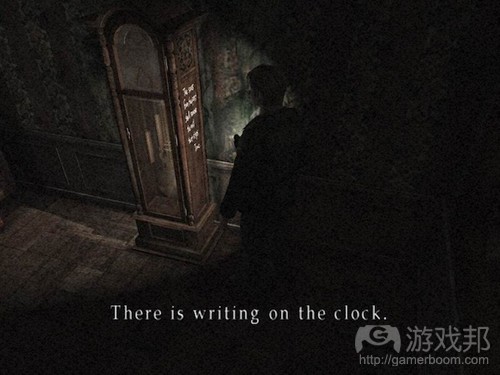

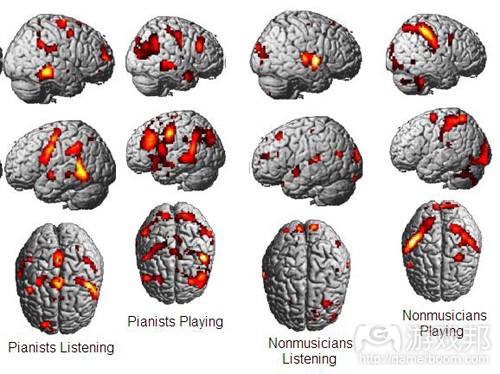
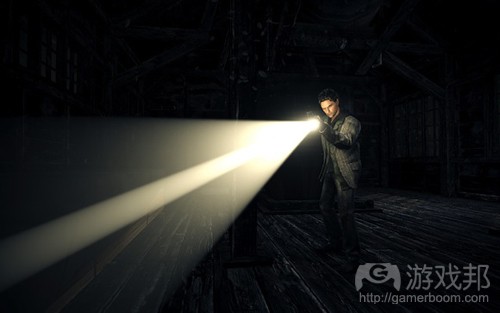

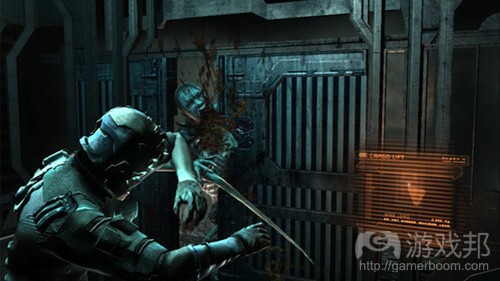

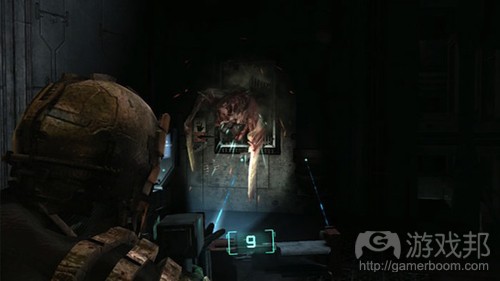















 闽公网安备35020302001549号
闽公网安备35020302001549号